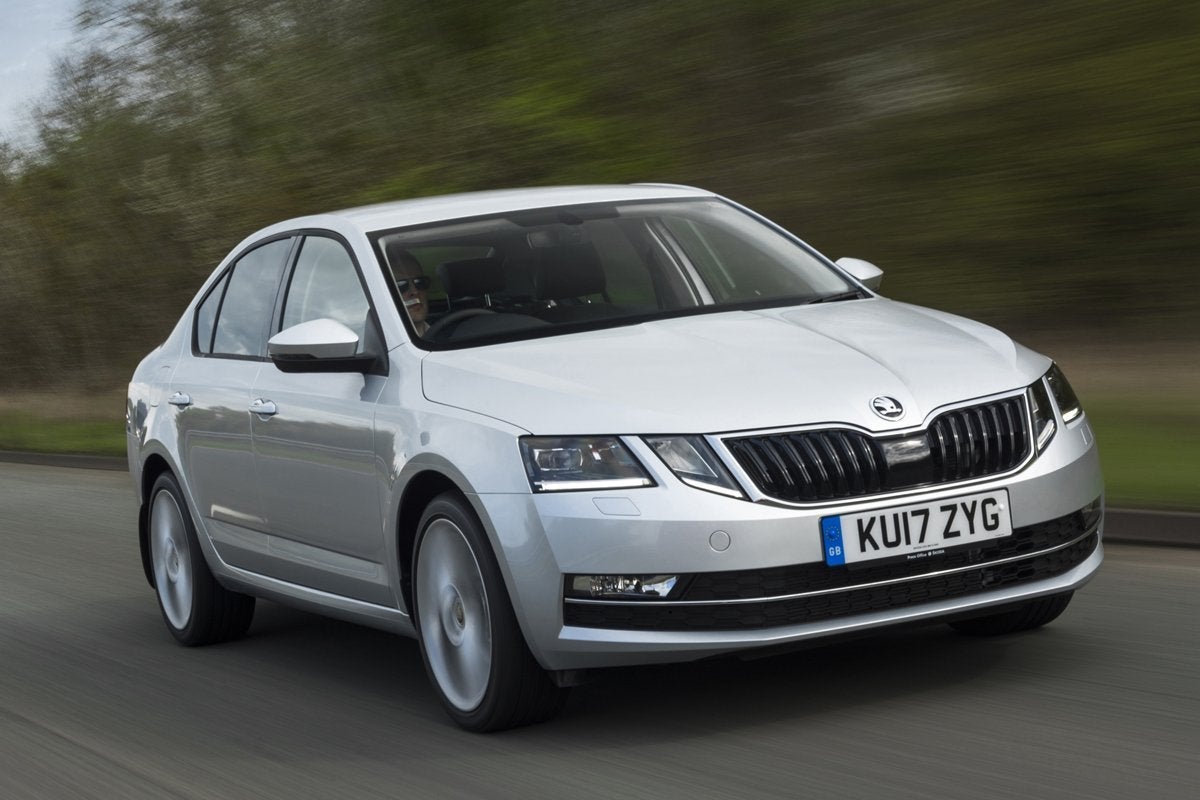Skoda Octavia (2013-2020) Review
Written by Andrew Brady
Quick overview
Pros
- Refined, punchy petrol engines
- Class leading practicality
- Brilliant infotainment system
Cons
- Missing the latest active safety kit
- Not as comfortable as some rivals
- Bland exterior design
Overall verdict on the Skoda Octavia
"The Skoda Octavia is possibly the most sensible used hatchback money can buy. When new, the Skoda Octavia offered huge practicality, a quality interior, an excellent engine range, low running costs and great value for money - and none of that is diminished when buying used. With a huge range of versions to choose from you'll have to work hard to justify buying anything else."
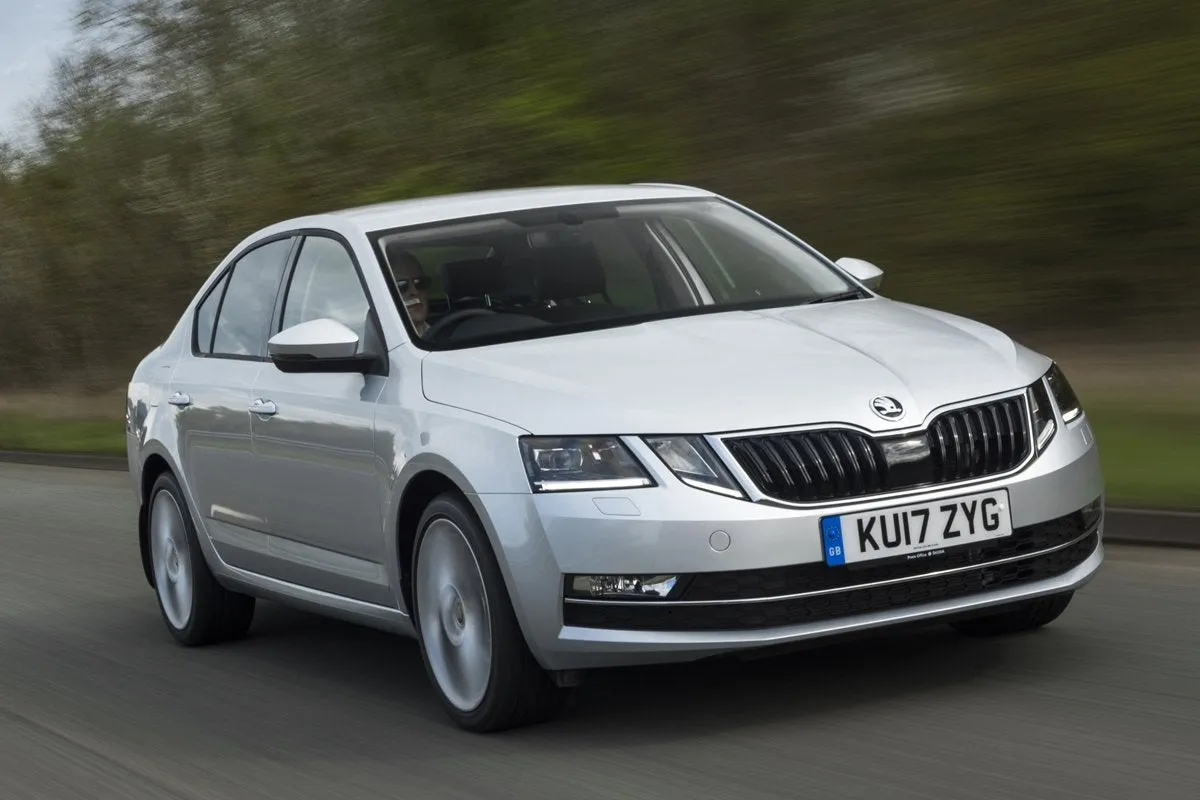
The Skoda Octavia is the ultimate family car that can give you more for less. It has a bigger boot, more standard equipment and passenger space than most of its rivals, yet still manages to undercut them on price. It’s a real steal as we'll explain in this Skoda Octavia review.
Although value for money is a strong selling point, this is no pound-shop special. The interior is smart, with a surprisingly high quality feel to the materials, and sturdy build quality that really impresses, plus loads of kit.
Every model in the range has the essentials for modern motorists, but the Skoda Octavia SE has a few extras worth paying for.
It’s one of the Czech brand’s most popular cars, offering the practicality of a Ford Mondeo for less than the starting price of the much smaller Ford Focus. This model was launched in 2013, with a major facelift in 2017 that introduced a number of new engines, and a slick new infotainment system that's now a highlight.
Available as a hatchback, there's also the cavernous Skoda Octavia Estate and an off-road ready four-wheel drive Skoda Octavia Scout. There's a wide choice of engines, including a high-performance diesel and petrol Skoda Octavia vRS.
All the hatch versions are front-wheel drive, and the range kicks off with a surprisingly perky 1.0-litre petrol TSI turbo with 115PS and a manual transmission, going all the way up to a (now axed) 2.0-litre with 190PS.
On the diesel side, there is a frugal 1.6-litre TDI that is a bit of a plodder, but can manage over 60mpg even in real world conditions, so will prove very cheap to run, or a much quicker 2.0-litre that’s nearly as efficient.
If you're doing big miles and need a lot of effortless pulling power, the latter is your best bet. However, most buyers will be equally well served by the 1.5 TSI, which is much quieter in the city, but really flexible in-gear. As with all but the entry-level petrol, this unit comes with the option of an excellent 'DSG' automatic gearbox.
The Skoda Octavia feels most at home on the motorway. This is where its soft suspension, refined cabin and light controls make it a relaxing cruising companion. It's safe, stable and predictable to drive, but not very sporty.
On scruffier suburban roads, its lack of sophistication is more pronounced, with noticeable suspension noise, and an occasionally brittle ride that comes unstuck when the surface gets very bumpy, unlike say, a Volkswagen Golf. We'll forgive it though, because the amount of space on offer is outstanding. The boot dwarfs anything you'll find in this class, and rear passenger space is fantastic, making it practical for young and older families alike.
However, because the Skoda Octavia is a slightly older car, most of the latest safety equipment is optional, with key equipment such as automatic emergency braking, a reversing camera and adaptive cruise all costly extras. A brand new Skoda Octavia arrived in 2020, aimed further upmarket, but its predecessor remains one of the best family cars money can buy. It’s practical, the interior still feels modern, and most importantly, it's great value.
If you're looking for the newer version, you need our Skoda Octavia (2020-) review.
Is the Skoda Octavia right for you?
The Skoda Octavia is one of those cars that proves something that is great value doesn't have to feel cheap. As a practical family vehicle, its incredibly spacious cabin and truly massive boot are unrivalled at this price point.
Of course, for dog owners, country types and caravaners, the Octavia Estate will be even more tempting, especially since it comes with the option of four-wheel drive. The hatch is cheaper and nearly as big though. Perhaps it goes without saying, but this is a very sensible car. In most trims it eschews styling flair or driving excitement in favour of reasonable comfort and impressive space, but it won't turn heads or make you grin.
As a do-it-all family car it's hard to beat, but some drivers will struggle with its sheer size. It feels slimmer in city traffic than a Ford Mondeo, but is nearly as long, and most family hatches are easy to drive and park. If you need more space, you can't go wrong with the Skoda Octavia Estate.
What’s the best Skoda Octavia model/engine to choose?
Luckily for used buyers, there are no bad engine options for the Skoda Octavia. The older 1.4-litre TSI petrol is just as smooth and even nippier than the new 1.5-litre motor, just not quite as efficient on fuel. The newer models feature clever fuel-saving tech, and this frugal nature is part of why it's our favourite from the current line-up.
It has excellent performance and hushed refinement, but is still capable of returning 50mpg. If you covered less than 10,000 miles a year, we wouldn't hesitate in recommending the 1.5-litre model. It's available with a manual or automatic and in our preferred SE trim, which we think offers the strongest value.
If you regularly take long trips or want to use the car for towing, the 2.0-litre TDI diesel will be a better bet. It can achieve mid-fifties fuel economy and is quieter than the agricultural 1.6-litre model. Still, if you're not too sensitive to a higher price, an Octavia SE L (or used Laurin & Klement) adds luxury for a little extra cash.
What other cars are similar to the Skoda Octavia?
The Skoda Octavia sits on the cusp between classes. It's priced like a normal family hatch, but has the space and carrying capacity of an executive car from the rank above, such as the Ford Mondeo or Vauxhall Insignia.
With the introduction of the Skoda Scala, the brand has now resolved that problem, moving the Skoda Octavia upmarket. If you're in the market for a car with the latter's best qualities wrapped up in a smaller package, that could be it.
In terms of its closest rivals on price, this generation of Octavia competes in a category that encompasses everything from big hitters like the the Ford Focus, to the Volkswagen Golf, the great value Kia Ceed, impressive Hyundai i30 and the Peugeot 308.
For its practicality, reliability and running costs, the slightly pricier Honda Civic will be of interest, while some cheaper versions of the Vauxhall Astra have comparable rear space and more equipment for the same price.
Finally, if you are a company car driver keen to cut your monthly tax bill, the hybrid Toyota Corolla is among the cheapest options, before you dive into the confusing (and expensive) world of plug-in hybrids and electric cars.
Comfort and design: Skoda Octavia interior
"The understated exterior perfectly sets the tone for what you'll find inside the Skoda Octavia's cabin. Simplicity is the main ingredient, with a no-nonsense dash that's conservative, but so brilliantly executed you won't mind."
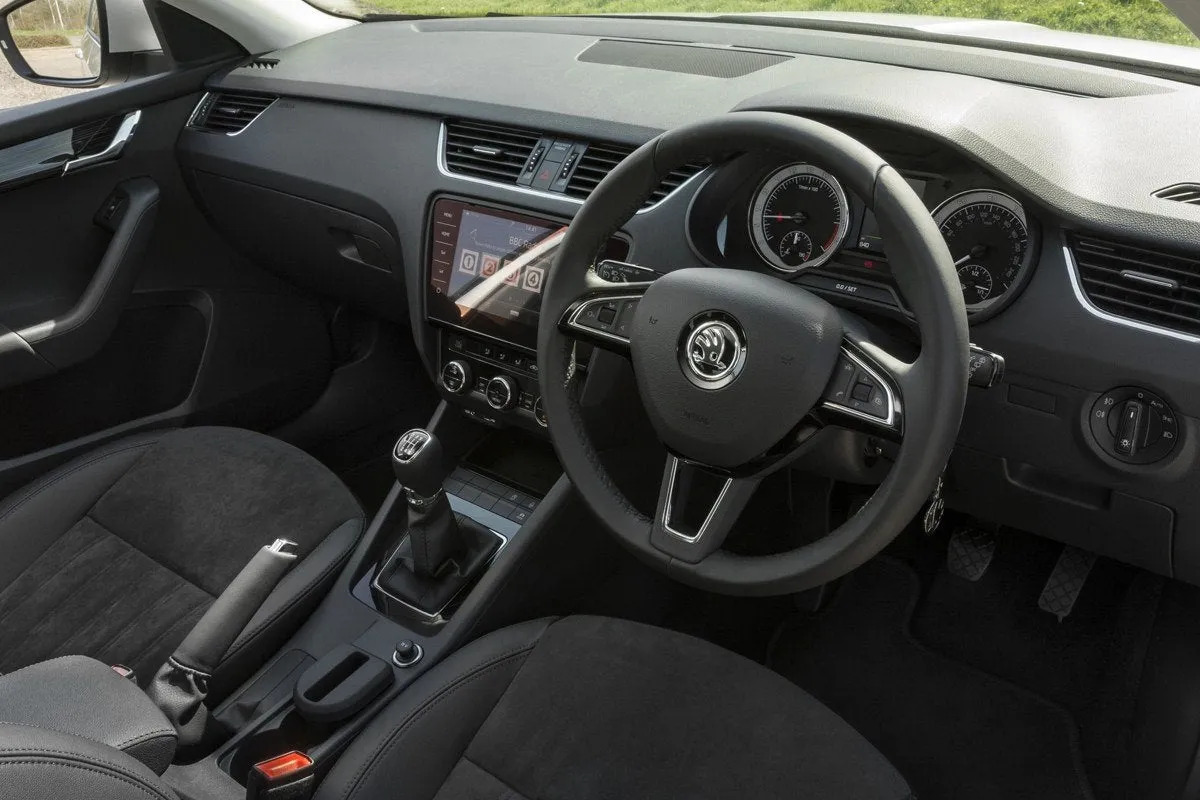
Its layout is all horizontal lines and neatly rounded corners, with a tapering centre console that's wide enough at the top to hold the 8.0-inch media infotainment screen, but slim enough at the base to add to the airy, spacious feeling.
Apart from stylish free-floating door handles that can trap unwary fingers, it's an ergonomic masterclass. The front seats are firm but very supportive, holding you in place but not creating sore spots on longer trips.
A wide range of adjustment to the seat and steering column make finding a good driving position a breeze, it also gets lumbar support on all but the entry-level Skoda Octavia S model, great for avoiding backache at the end of a drive. The pedals line up nicely, and there's a clutch rest for your left foot. Visibility is okay, but not the rearward view.
The display itself is neatly integrated behind a glossy glass panel, with a pair of volume and tuning knobs the only physical controls, but you get separate dials for the climate settings, seat heaters (where fitted) and fan. The ventilation controls are quite far from the wheel, but so chunky that they're easy to operate by feel alone.
Although the screen is mounted lower than in some rivals (forcing your eyes to wander further from the road to look at it) the clear menus, and big bright icons make it less distracting to use than many similar systems. We'd avoid the upgraded 9.2-inch unit. It loses the volume knob, and moves its buttons away from the driver.
Quality and finish
Given its affordable starting price, you could be forgiven for thinking the Skoda Octavia would be a workmanlike affair inside, but you’ll be pleasantly surprised to learn it’s quite the opposite. A smart design, paired with a decent selection of dash materials that are (mostly) soft and tactile, create an attractive driving environment.
Drop some coins or your phone between the seats and an exploratory rummage will reveal some hard and scratchy surfaces lower down around the doors, but where it counts, the Skoda feels robust and solidly built. The buttons and dials have a reassuringly precise action, although the optional DSG shift paddles are flimsy.
Entry-level cars look quite drab, with a button-free steering wheel and lots of blanking plates on the centre console where features would be on top-spec cars, but Octavia SE trim and above feature silver dash inserts and chrome door handles that brighten things up, while Octavia SE L models include suede-like Alcantara upholstery.
Go for the Skoda Octavia Sportline trim for thickly-bolstered front seats with integrated headrests, racy red stitching, and a flat-bottomed steering wheel, but these sporty flourishes feel at odds with the Octavia's sensible character. Still, the media display is slickly integrated, moving its cabin further upmarket. At this price, it's exceptional.
Infotainment: Touchscreen, USB, nav and stereo in the Skoda Octavia
No matter what the age or trim level of your Octavia, it will have a touchscreen. In older cars this will be fairly modest, a low-res affair with chunky physical shortcut keys on each side, but it's more than some rivals get.
Even the Octavia S model has eight speakers, Bluetooth connectivity, and DAB radio, but the post-facelift car brings everything bang-up to date. It has a snazzy 8.0-inch glass panel, touch-sensitive buttons, and clear graphics. The latest software has Apple CarPlay and Android Auto compatibility, giving unfettered access to your apps.
This setup is among the most intuitive touch-based systems we've used in any family car. The main menus takes no time to fathom, and its on-screen icons are oversized, making them much easier to read and press. Pick up the Octavia SE Drive specification, and you'll add a built-in navigation system, but the SE does fine without it.
That's not the last word in modernity from Skoda. A swish 9.2-inch display is optional on all trims, with 3D mapping, and gesture controls. The latter is a bit of a gimmick though, and while this screen looks fantastic, it's not as smartly designed as the cheaper unit, since the main controls are on the wrong side for the driver.
Two options worth mentioning are the Virtual Cockpit digital instruments (giving you a configurable screen in place of conventional dials) and the upgraded Canton sound system, with ten speakers and 570W of power.
Space and practicality: Skoda Octavia boot space
This is where the Skoda Octavia's star shines its brightest. No other family car has the limousine-like rear space or estate-sized luggage capacity that it can provide and even the heaviest packers will struggle to fill this boot.
The loading bay is over a metre long and wide, even with the seats in place, and you can squeeze 590 litres of stuff inside without folding or sliding anything out of the way. For reference, Ford's Focus holds just 341 litres.
It's not the cleverest boot in the class though. There's a slight loading lip to negotiate, and no variable height floor like you get in the estate, so when you fold the 60/40 split-seats they leave a big hump in the load bay. Still, we're inclined to overlook these foibles considering its sheer volume, with a vast 1580-litre full capacity.
Remember, this isn't an estate car, but you could reasonably move into a small flat with an Octavia hatch as your only removal vehicle. Passenger space is class-leading too, especially legroom. Harlem Globetrotters would be content here, and it has room for five, but whoever's in the middle has to straddle a raised hump in the floor.
Parents will find a pair of ISOFIX mounting anchors in each of the outer chairs for fitting a child seat securely. The plastic covers will get lost easily, but there's so much room to work in that the whole process is no chore.
In the front, storage is more generous, with a tray in front of the gear selector, wide door bins, and an ample glovebox that'll have you covered whether you're a mitten wearer or partial to a pair of driving string backs.
Some cars have extra oddment stowage under a wide central armrest, and there are trays under the seats.
Handling and ride quality: What is the Skoda Octavia like to drive?
"In most settings the Skoda Octavia comports itself in a competent, capable, and fairly unremarkable manner. It's an easy car to drive. The light steering is perfect for parking manoeuvres - its handling is predictable and secure."
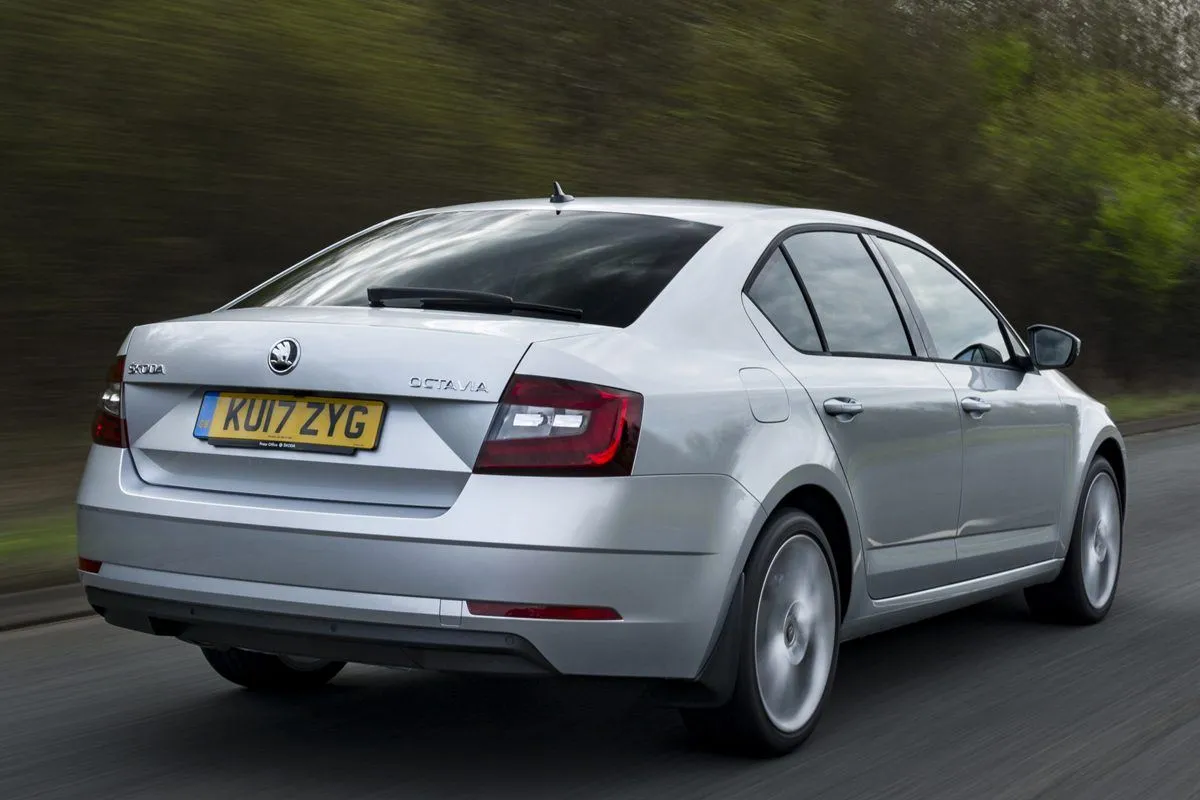
The majority of the range comes with four switchable driving modes (Normal, Eco, Sport, and Individual) that alter the throttle response, steering weight, and so on. A nice idea in theory, but you might play around with it once before leaving the car in the 'Normal' setting. The artificial weight of 'Sport' adds no added steering feel.
Ride comfort in the Skoda Octavia is generally pretty good, although it steadily improves the faster you go. Does this mean flinging it towards the horizon at maximum warp to try and keep everyone comfortable? Well, no. It's more that at lower speeds, the ride is fidgety, and not able to cope with a series of imperfections at once.
However once you start travelling a bit faster, on a flowing road or the motorway, the suspension doesn't get as flustered. The natural momentum it carries helps smooth out bigger dips and crests, and calms it all down. This makes it an easy-going companion on longer trips, but not as supple around town as say, a Ford Focus.
It's never uncomfortable, but occasionally gets flummoxed by sharp-edged ruts in the road. Drop a wheel into a pothole for example, and it sends a judder through the cabin, with an audible 'thump' from the suspension. Obviously, this doesn't feel very sophisticated, but there are optional adaptive dampers to curb its bad habits.
Skoda calls this Dynamic Chassis Control, and while it's not cheap (or available in the smallest engines) cars with it fitted do manage to breath a little easier on rough Tarmac. It's no night-and-day transformation though. The brittleness of the ride means large alloys (and Sportline trim) are best avoided, even with the optional kit.
What engines and gearboxes are available in the Skoda Octavia?
Skoda is part of the Volkswagen Group, so its engine range is broad, and has evolved as Volkswagen has introduced fuel saving technologies and transmission types, but the core of the range is four-cylinder petrol and diesels.
When it was first launched you could get the Skoda Octavia with 1.2-litre, 1.4-litre and 1.8-litre TSI petrols, or a 1.6 and 2.0 TDI diesel. Power outputs ranged from 110PS to 180PS but all hatchback models are front-wheel drive only.
There are no bad engines from the old range, with each one of those delivering varying degrees of brisk performance or parsimonious economy. In the case of the 1.4 TSI and 2.0 TDI, a rather pleasing mix of both.
In the intervening years there have been oddities such as the rapid-but-thirsty 2.0-litre 190PS petrol reserved for the posh Laurin & Klement model, but the diesels have remained largely untouched. However with lots of buyers shunning the black pump in favour of petrol, that side of the line-up has undergone sizeable changes.
On latter models the range starts with an eager, peppy 1.0-litre unit with three cylinders and a turbocharger. It goes very well considering its size, but can struggle with a fully loaded car.
Our pick is the 1.5 TSI. It doesn't feel as free-revving as the old 1.4-litre (blame emissions regulations) but shuts down half its cylinders to save fuel, a trick that mean it's as frugal as the titchy 1.0 TSI. However if you're covering high mileages it's hard to ignore the effortless torque of the bigger 2.0-litre diesel.
Unlike the latter, it's available with a choice of gearboxes too. The standard six-speed manual is a tad notchy but otherwise pleasant to use, while the seven-speed 'DSG' twin-clutch auto shifts ratios near seamlessly. There's only a small efficiency penalty to pay for choosing the auto, and it doesn't blunt performance either.
Refinement and noise levels
Driving the Skoda Octavia for hours on end shouldn't fill you with any sense of trepidation. It's an accomplished motorway cruiser, which is where its engines (especially the diesel models) are their most mild-mannered.
The six-speed manual gearbox has tall ratios, keeping the revs low even when you find yourself passing other traffic in the outside line, and the optional dual-clutch auto's only vice is its jerkiness at parking speeds.
True, the Skoda doesn't suppress wind noise quite as well as the class best, with a noticeable flutter from the area around the wing mirrors, but it always remains below the threshold of becoming intrusive or wearisome.
Around town, the diesel models are a little more vocal than their petrol counterparts. The 2.0-litre grumbles a bit when pushed, and it's not as well isolated from cabin as the same unit in the latest Volkswagen Golf or SEAT Leon.
Both petrols are quieter at all speeds, but you'll hear a characteristic thrum from the 1.0-litre three-cylinder if you work it hard (which given its modest output will be quite often) that's missing from the effortless 1.5 TSI.
One thing that might surprise you is the suspension noise. It's the one area that exposes some cost-cutting in the Skoda Octavia, as a lack of insulation means you can hear it clonking away over big ruts and speed humps.
Safety equipment: How safe is the Skoda Octavia?
Back when it was launched in 2013 the Skoda Octavia was one of the safest family cars in the class. All models get seven standard airbags, and nine if you paid for the optional side impact protection for rear seat passengers.
Step up to Octavia SE trim and this kit list includes a fatigue sensor to tell you when to take a break on a long drives, by monitoring your steering inputs it can tell when it's time for a coffee stop. Other useful features include the post-collision braking system, which stops you rebounding into a secondary impact, minimising the damage.
It scored highly in official Euro NCAP crash tests, sweeping all four individual categories with top marks. Still, it is now an older model, and many of its most impressive safety features are optional, instead of standard fit.
For example, Front Assist, (Skoda's name for its auto-emergency braking system) is only on the spec sheet of the posh SE L model. It's vital for preventing shunts in chaotic city traffic, as it can scan the road, watching out for potential obstacles. If it senses one, it'll dab the brakes, engaging them fully if the driver fails to react.
A reversing camera was also optional across the range, but at least SE models come with rear parking sensors to help avoid dings and scrapes in the supermarket car park. Most rivals have more driving aids as standard, but as is common in modern vehicles, you had to pay extra to the dealer to get a spare wheel in the boot.
MPG and fuel costs: What does a Skoda Octavia cost to run?
"None of the hatchback versions of the Skoda Octavia come with four-wheel drive, so they're a bit cheaper to run than the estate and and Scout models across the board. The efficiency champion of the range is the 1.6 TDI."
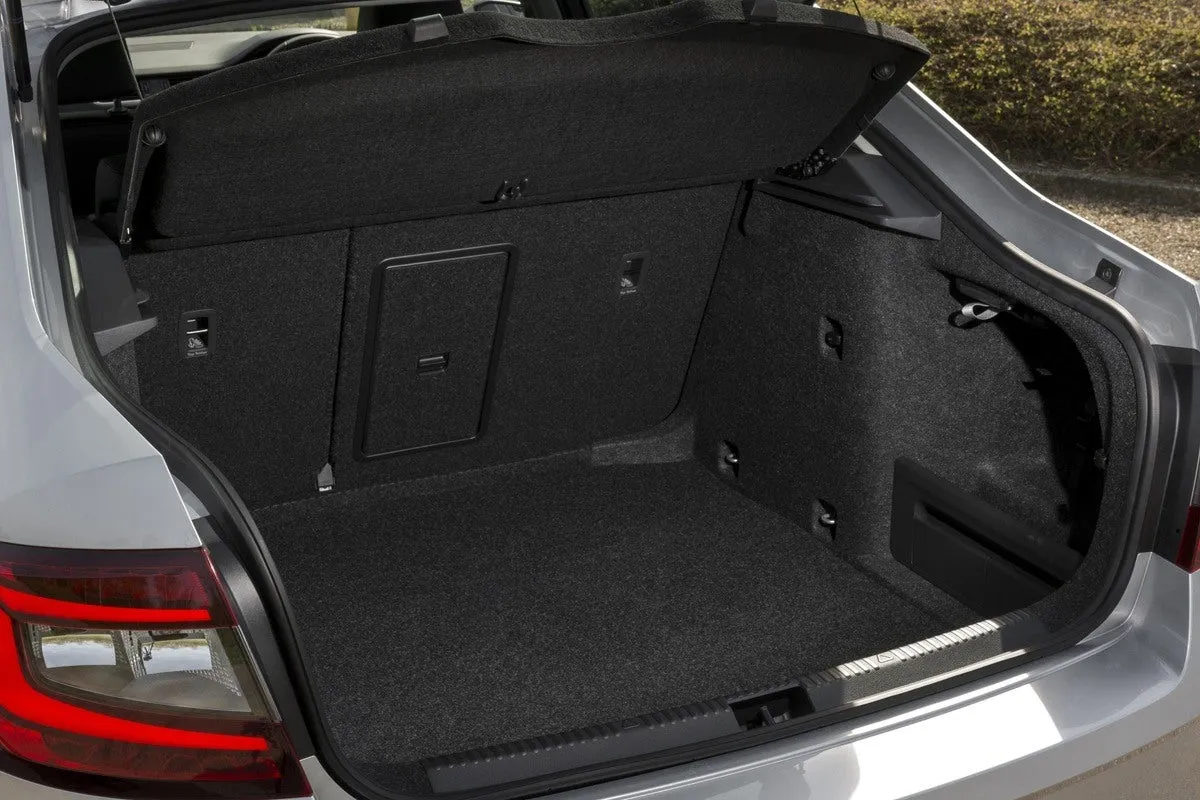
The older Skoda Octavia Greenline model claimed a combined 80mpg on the older NEDC tests, but even the newer model without any tweaking like a lower ride height and aerodynamic wheels should manage a real world 60mpg.
In fact, with a few notable exceptions (1.8 TSI DSG) the Octavia is very economical. Newer 1.5-litre petrol cars have cylinder-deactivation tech, so both it and the 1.0-litre can manage well over 50mpg.
With a standard 50-litre fuel tank, you'll be able to go over 600 miles between fuel stops in the smaller diesel.
How reliable is a Skoda Octavia?
The Skoda Octavia scored a solid 9.14 out of 10 for reliability in the HonestJohn.co.uk Satisfaction Survey, but to be honest we'd expect to see an even higher score - the Octavia should be a very reliable companion.
As a brand Skoda did even better, placing 6th out of 30 manufacturers and cementing its reputation as one of the more reliable brands. That it finishes ahead of its Volkswagen and SEAT stablemates says a lot.
Insurance groups and costs
Unlike some of its other running costs, insuring your Octavia will be a tad pricier than you might expect. It's not drastic, but on average it sits one or two groups higher than its family car rivals, compared spec-for-spec.
If you have a chequered licence, recently lost your precious no-claims bonus, or are looking to cut costs then the 1.0 TSI petrol (Group 12) or 1.6 TDI diesel (Group 13) in S or SE trim will be the most affordable options.
Getting cover for our favourite 1.5-litre petrol will require deeper pockets. It's right up in Group 20 with SE Drive trim, however dig deeper and get the SE L instead, and it drops down two brackets, thanks to its extra safety gear.
VED car tax: What is the annual road tax on a Skoda Octavia?
Buy a Skoda Octavia registered before April 2017 and it falls under the older road tax regime, which was variable and based on how much CO2 your engine emits under the old NEDC tests. Almost the entire range from this period slips under the 120g/km barrier, meaning they'll cost you less than £30 a year, with many tax exempt. If you can find a 1.6 TDI CR Greenline 110PS you won't pay anything at all.
Cars registered after that cutoff date have to pay a standardised flat-rate of £165 that is applied to all petrol and diesel cars, so will be pricier to keep on the road, at least no Octavia qualifies for the top 'Premium' rate.
How much should you be paying for a used Skoda Octavia?
"The Skoda Octavia has been on sale for the best part of a decade, and its popularity with mini cabbers means that it's possible to spend less than £3000 to get an early 2013 1.6-litre diesel that's been to the moon and back."
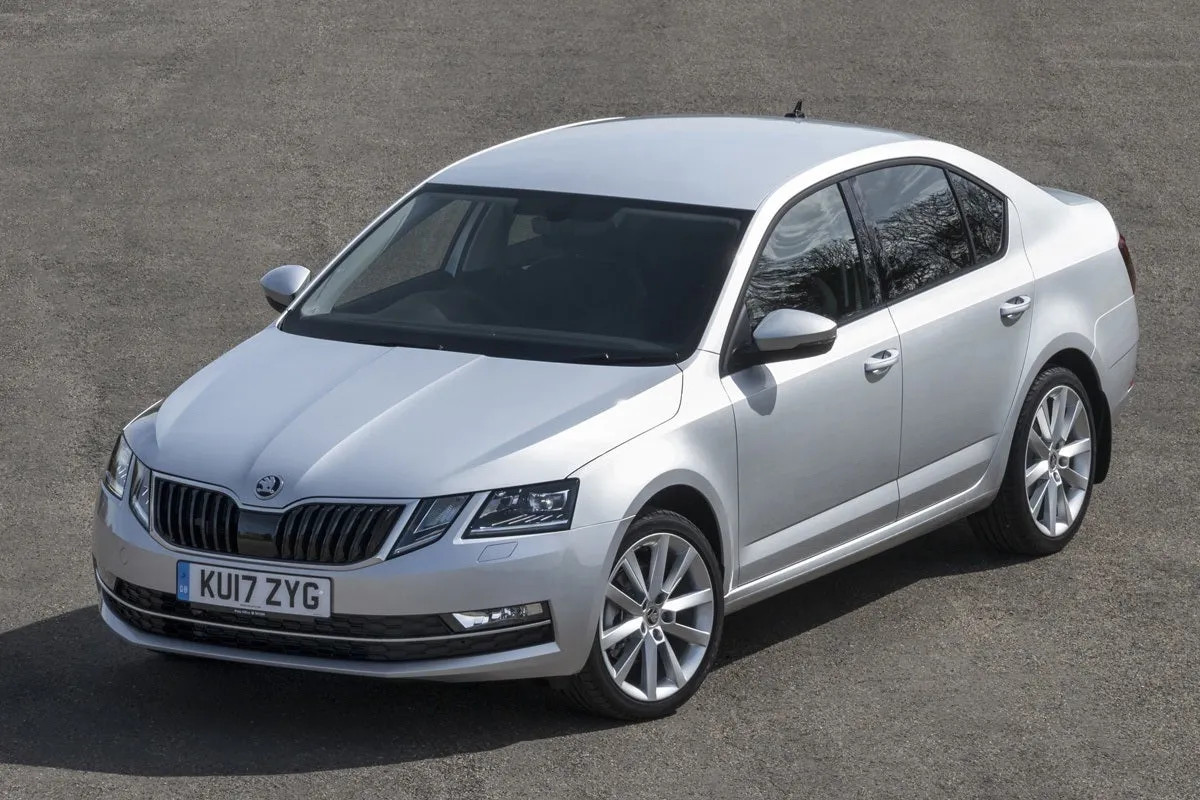
Double that number though, and you'll be looking at cars with average mileage, in a wider choice of trims, and with the excellent 1.2 TSI and 1.4 TSI petrols, while an extra £1000 will secure you a 2.0-litre diesel.
For an automatic, you'll need to scrape together at least £7500, while prices for the updated post-2017 car with its improved infotainment system and updated engine range start from around £9000 for a 1.0 TSI SE.
The retired Laurin & Klement spec, which included goodies like electric memory seats, adaptive cruise and the upgraded 9.2-inch touchscreen system from 2017 can be found in very good condition for just £14,000.
It's a similar story on nearly-new models, as you can get a 2.0-litre petrol with hot hatch-rivalling 190PS and all the toys with only delivery mileage showing for £24,000; less than an entry-level new Volkswagen Golf.
Trim levels and standard equipment
Skodas - especially the Octavia - offer great value for money, but what it gives with one hand, it takes away with the other one. So while every single model has all the essentials, you will be paying extra for luxuries.
There are five different trims; starting in the no-frills Skoda Octavia S, going up through SE, SE Drive, SE L, and Sportline.
The latter replaced the older Skoda Octavia Laurin & Klement luxury model with a sportier specification inspired by the vRS.
All models have all the basics covered, with air-conditioning, electric windows, auto lights and wipers and a smart 8.0-inch touchscreen with Apple CarPlay and Android Auto compatibility, DAB and Bluetooth included.
Pay a little more for the Skoda Octavia SE (as we would suggest doing) and you get useful extras like cruise control, a set of rear parking sensors, selectable driving modes, climate control, and a handy hidden umbrella under the seat.
Skoda Octavia SE Drive models add sat-nav, and a year’s subscription to online services, and on-board Wi-Fi to that kit list, while the Skoda Octavia SE L feels a bit more luxurious, with suede and leather seats, all-round parking aids, and full LED headlights. Skoda Octavia Sportline does what it says on the tin; giving you sportier styling cues inside and out.
Ask the heycar experts: common questions
Is the Skoda Octavia a good car?
What problems do Skoda Octavias have?
Is the Skoda Octavia a Volkswagen?
Get our latest advice, news and offers
Keep me updated by email with the latest advice, news and offers from heycar.
By submitting you agree to our privacy policy
